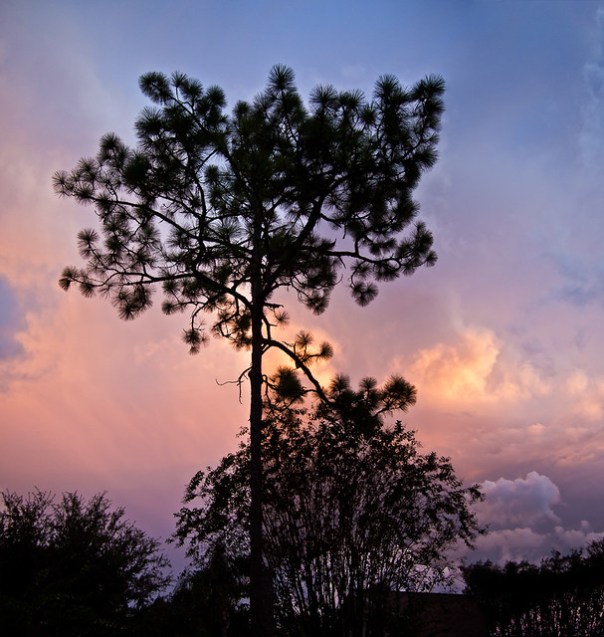We’ve had almost continuous heavy rain here since Friday evening. If you’re a visitor to Central Florida – sorry. If you’re a resident, you know we need the water – we’re still behind for the year.

Sunset storms and tree: The scene near my house on Friday evening as the storms started to move in
By mid-day Sunday, the weather service recorded somewhere between 8 and 15 inches of rainfall, depending on the location. We’ve also had a flood watch along with a lake wind advisory in effect all weekend.
So it hasn’t been a particularly good time for photography. I was going to meet Tom M. on Saturday morning and head out to the Marl Bed Flats at the Lake Jesup Conservation Area for another sunrise shoot. But we called it off after getting woken up all night by the rain and wind. Fields of flowers aren’t the best subject in windy and rainy conditions. And I think there would be a lot of mud to slog through in that area. That’s a shame, since the flowers there will probably be past their peak by next weekend.
There’s almost always something beautiful to photograph – something unique to share with others. Sometimes you just have to think a bit different or try a little harder. The question is whether you have the time and energy to search these things out and the vision to see them when you find them. In situations like this weekend, why not make weather the subject?
This pond is on the side of the main road close to our house, and I’ve wanted to photograph it for a while. On our way back from breakfast, my loyal Sherpa dropped me off for a few minutes with her umbrella so I could capture the scene between cloud bursts. The dark clouds on the left turned into another huge shower just after I made this photo.

A small pond, in between showers
Thanks for stopping by and reading my blog. Now – go make some photos!
©2011, Ed Rosack. All rights reserved


















